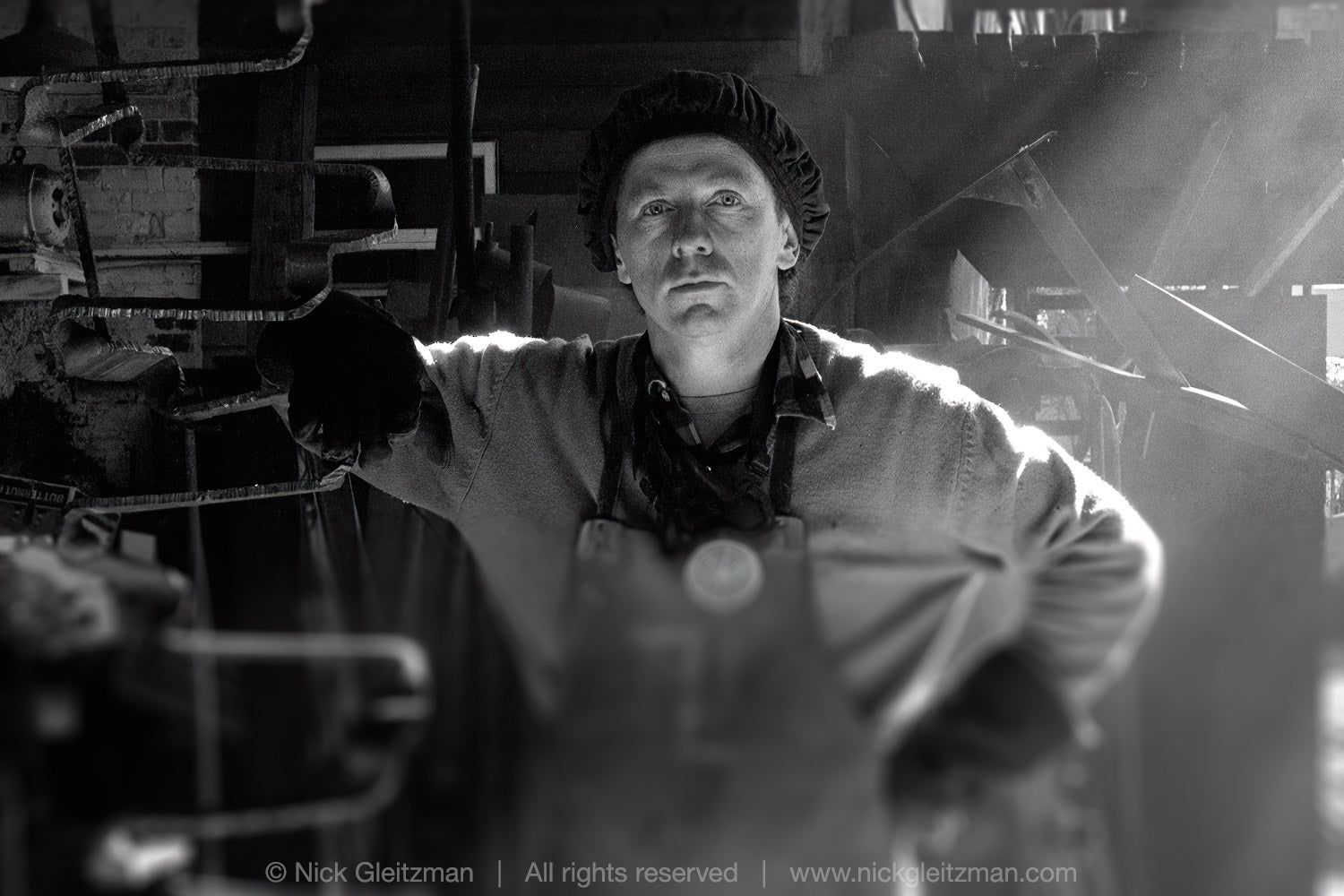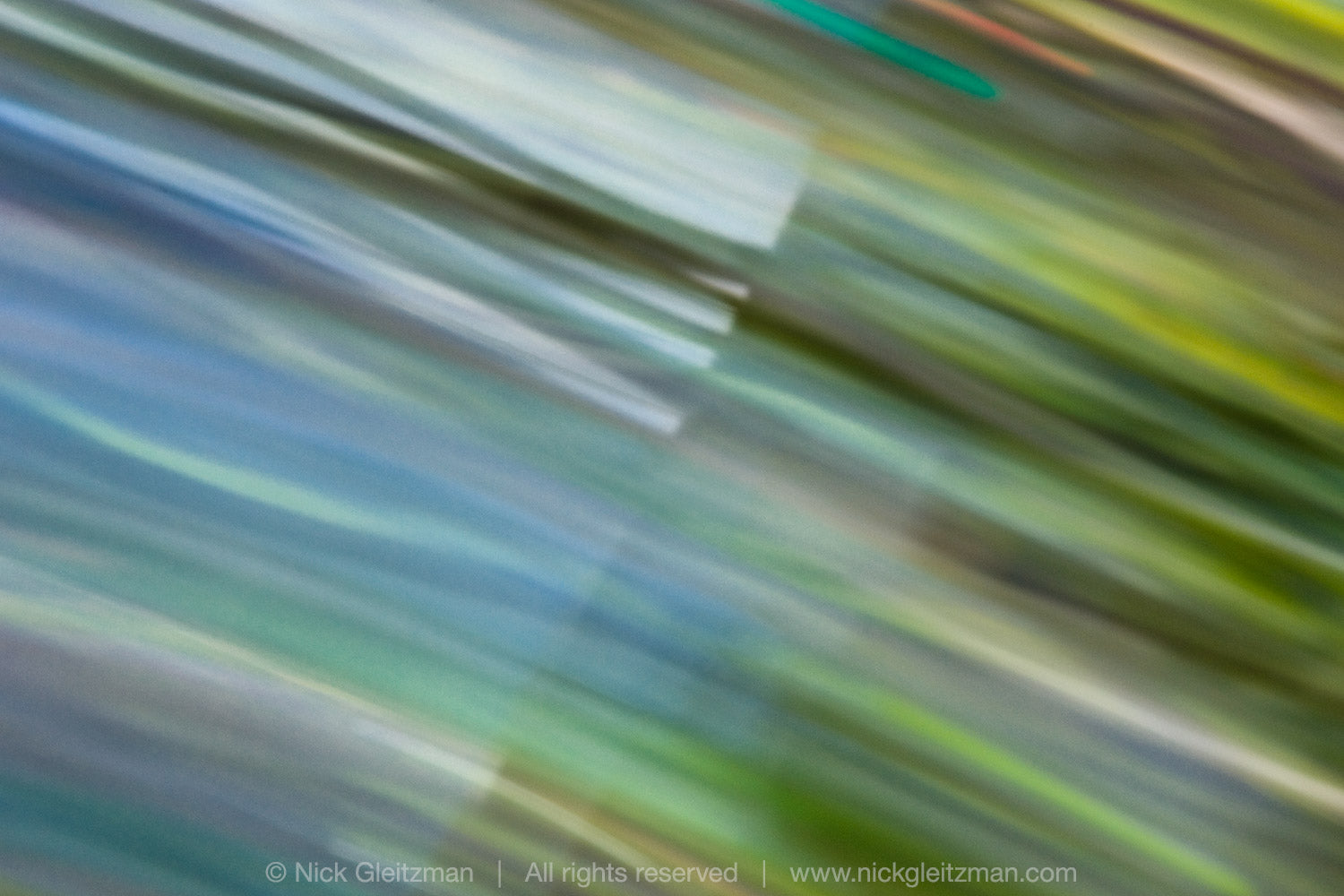Imagination is more important than knowledge.
~ Albert Einstein
“Learn to see the world as your camera does.”
I can’t remember exactly when I first heard this piece of advice, but I’ve never forgotten it. It’s fundamental to excellence in photography to understand that your camera does not see the world in the same way as your eye. The first clue is that singular. We have two eyes; a camera has only one.*
Our eyes, like cameras, have lenses with variable apertures, sensors, and a processor – but our eyes work very differently.
A camera records the view it’s pointed at with equal emphasis across the entire frame. There is no ‘peripheral vision’; every square millimeter of film, every photoreceptor (‘pixel’) in a digital sensor, is able to record information in the form of light – variations in intensity, colour, and focus – to the same extent. (Actually, in practical terms, most cameras have better performance at the centre of the frame than at the corners, but that’s a function of the optical quality of the lens – a whole other topic.)
In each of our eyes, though, there is one ‘sweet spot’ on the retina, the fovea, only about 1.5 millimeters in diameter, where a concentration of photoreceptor cells allows maximum visual acuity (i.e. ‘sharp focus’). In order for us to ‘see’ what’s in front of us, we move our eyes about constantly, on average about twelve times a second, focussing on many specific points within a scene. At the same time, the remainder of the retina is gathering information with reduced acuity, but still registering brightness, colour, and motion. All that information is converted by the photoreceptors of the retina and passed along the optic nerve as electrical impulses to the visual cortex of the brain, which assembles a representation of the scene.**
The sense that we call vision is nothing short of remarkable.
- Two eyes gives us binocular vision, enabling depth perception, and enhanced detection of form and motion. But to get a little closer to how your camera sees the world, close one eye – even before you look through your viewfinder. Cameras see the world in 2D; it helps if you do, too. Once you do start to compose your image in your viewfinder, though, use the ability of your eyes to build up an image. Don’t just look at your main subject or where the focus is sharpest. Track your eye around the entire frame – especially the edges and corners. Make sure to exclude everything you don’t want in your image.
- Two eyes also greatly extends our angle of view. Peripheral vision allows us to see, without apparent distortion, close to 180 degrees. Try this: hold a piece of paper with text printed on it in each hand, with your arms outstretched to either side in a straight line. Look straight ahead. You can’t read what’s on the paper without turning your head to direct your foveas to it, but you can see it – on both sides. If you waggle the paper, you can detect the motion.
- In photography, dynamic range refers to the luminance range - the difference between the lightest and darkest tones - of a scene or image. Real-world scenes in full sunlight with areas of deep shadow can have a brightness range of 1,000,000:1, or almost 20 stops. A high-end camera sensor can capture around 14.5 stops, or 28,500:1. Our eyes can also handle about that at any one time, but can quickly adapt to a higher brightness range by scanning around the scene and adjusting the sensitivity of the retina according to which part – bright or dark – the fovea is directed at. This real-time processing of information is virtually seamless, and enables us to easily perceive the detail in a 20-stop scene. Imagine having a camera sensor that could dynamically apply varying ISO values to individual pixels, on the fly!
- The resolution of my digital images is important; my aim is to be able to create high-quality prints at large sizes, so I use a camera with a 36 megapixel sensor. It’s difficult to assign a figure for resolution to the eye, because it’s not a static system, but it’s been estimated that the full field of view of human vision yields an impressive 576 megapixels.
The key word in this process we call ‘seeing’ is representation. Our vision is not a sequence of snapshots, a slideshow, projected onto the retina. It's more like a video stream, but made up of many composite pieces of information, assembled on the fly by our brains to give us the experience of visual perception. We ‘see’ the whole picture, all the time, but there are always gaps – many of them – in the stream of information. Our brains fill in those gaps with expectations, biases, and the influence of previous experiences. The sense that we call vision is an act of imagination.
You and I, and as many other people as might be present, can stand and look at the same sunset and we will all see something different. Not completely so; there is enough commonality for us to agree that we’ve seen the same event, but our individual experiences are different enough from the others’ that it is only ‘real’ specifically for each of us.
They are all real – and at the same time, none of them are.
* I know, I know – camera technology has included more than one lens for 150 years. Stereoscopic cameras and viewers have been around since the 1860s. For years now, motion pictures and TV broadcasts have been made in 3D. Cameras with multiple lenses are now widely used for VR and AR applications. There was even a camera invented in 2011 (based on a concept first proposed over century before) which used an array of microlenses to allow the ability to refocus images after they had been made. However, this discussion is about a camera that uses one lens to record a 2D image on a piece of film or a digital sensor.
** This is, of course, a massive simplification of a hugely complex process.
Banner photo by Alicia Petresc on Unsplash
Also in 1,000 Words


Nothing Is Real


Terminal Velocity








